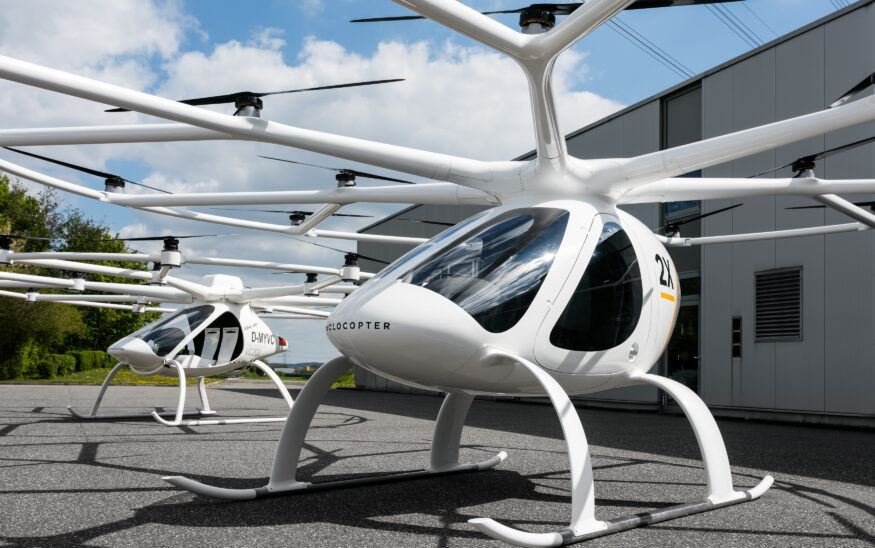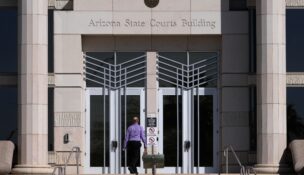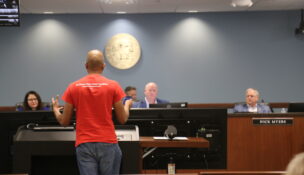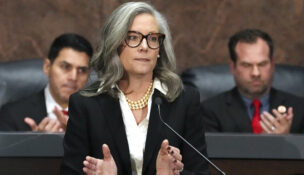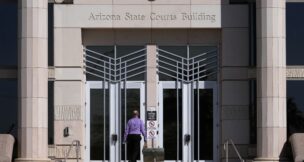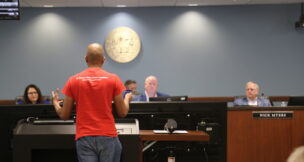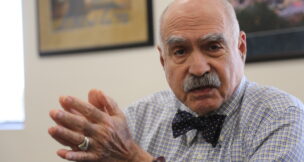Arizona invests in infrastructure for flying cars
Jamar Younger Arizona Capitol Times//October 25, 2025//
Arizona invests in infrastructure for flying cars
Jamar Younger Arizona Capitol Times//October 25, 2025//
Key Points:
-
State leaders want to position the state to be at the forefront of Advanced Air Mobility
-
Sen. David Farnsworth has been meeting with industry leaders to discuss the issue
-
Farnsworth views Advanced Air Mobility as part of a bigger strategy to modernize transportation in the state
Sen. David Farnsworth is optimistic that Arizona can see air taxis flying through the state in the near future.
But if the state wants to fulfill the vision of vehicles zooming through the air like “The Jetsons,” Farnsworth believes it will have to adopt an approach similar to the oft-recited line from the movie “Field of Dreams.”
“If you build it, they will come,” Farnsworth said in a July interview.
Farnsworth, a Mesa Republican, said earlier this month he has been meeting with industry leaders in a group he calls the Air Mobility Senate Advisory team to discuss innovations and potential legislation regarding Advanced Air Mobility, a category of electric aircraft known as “air taxis.”
“I’m very passionate about it, but I don’t have the expertise to come up with the ideas on my own,” said Farnsworth, chair of the Senate Appropriations and Transportation Committee.
There’s a “probability” that he’ll run a bill on the issue for the upcoming legislative session, he said.
Farnworth’s endeavors are part of a larger effort from state leaders to position Arizona at the forefront of an innovation they say could be a viable transportation option within a few years.
This year’s state budget included $2 million to establish an Advanced Air Mobility Fund, a portion of which is to be used to build infrastructure to accommodate the vehicles such as vertiports, that would allow them to take off and land.
In May, Gov. Katie Hobbs signed a bill directing the Arizona Department of Transportation to develop a statewide plan or update the state’s aviation plan to include vertiports, electric aircraft charging stations and other infrastructure to meet the needs of Advanced Air Mobility, and establish requirements for the infrastructure.
The legislation, which was introduced as SB1307 and sponsored by Sen. Frank Carroll, R-Sun City West, also calls for the Arizona Commerce Authority to provide education materials to local and regional jurisdictions on the benefits of the vehicles.
A number of companies across the country have been developing and testing flying vehicles designed to carry passengers and goods.
One company, Archer Aviation, announced in May that it was selected as the official air taxi provider for the 2028 Olympics and Paralympic Games in Los Angeles.
“With increasing urbanization, a growing global population and aging infrastructure, there’s a need for new safe, sustainable and accessible modes of transportation,” said Mark Gaspers, director of government operations for The Boeing Company, during a House Transportation and Infrastructure Committee hearing in March.
Gaspers was representing Boeing subsidiary Wisk, which is developing autonomous four-passenger electric air taxis, and spoke in support of SB1307.
Although the technology and prototype vehicles exist, there’s still a lot to figure out regarding the best uses for the vehicles, the resources needed for building vertiports, understanding what safety issues could arise and establishing regulations, said David King, an associate professor at Arizona State University’s School of Geographical Sciences and Urban Planning.
King said the implementation of these vehicles could look less like “The Jetsons” and more like practical uses such as rescuing stranded hikers and people during emergencies, and transporting supplies during natural disasters.
King also envisioned the vehicles serving as a quieter, safer replacement for helicopters.
“That’s speculative on my part, but that’s the kind of thing that I could see,” he said. “Making life better, even if they don’t become commonplace as a way to get around.”
Flying vehicles serving as air taxis in urban areas are less likely to happen in the immediate future due to airspace restrictions on where those vehicles could fly.
“Airspace above cities is quite contested because we already have a lot of regulations about what different types of helicopters can fly at different levels,” he said.
However, Farnsworth’s efforts to study the viability of these vehicles for transportation purposes are a necessary step, King said.
“There is a need for a lot of research to answer some of these very questions,” he said.
Farnsworth views the advancement of Advanced Air Mobility, along with other transportation modes such as autonomous ground taxis such as Waymo, as part of a bigger strategy to modernize transportation in the state, he said.
“Advanced Air Mobility and autonomous vehicles are no longer concepts of the future — they are active technologies with real-world applications,” he said in a statement on Oct. 6. “My job is to ensure that Arizona stays ahead of the curve, not behind it. This means pursuing innovative yet grounded solutions that are forward-looking but fiscally responsible.”

